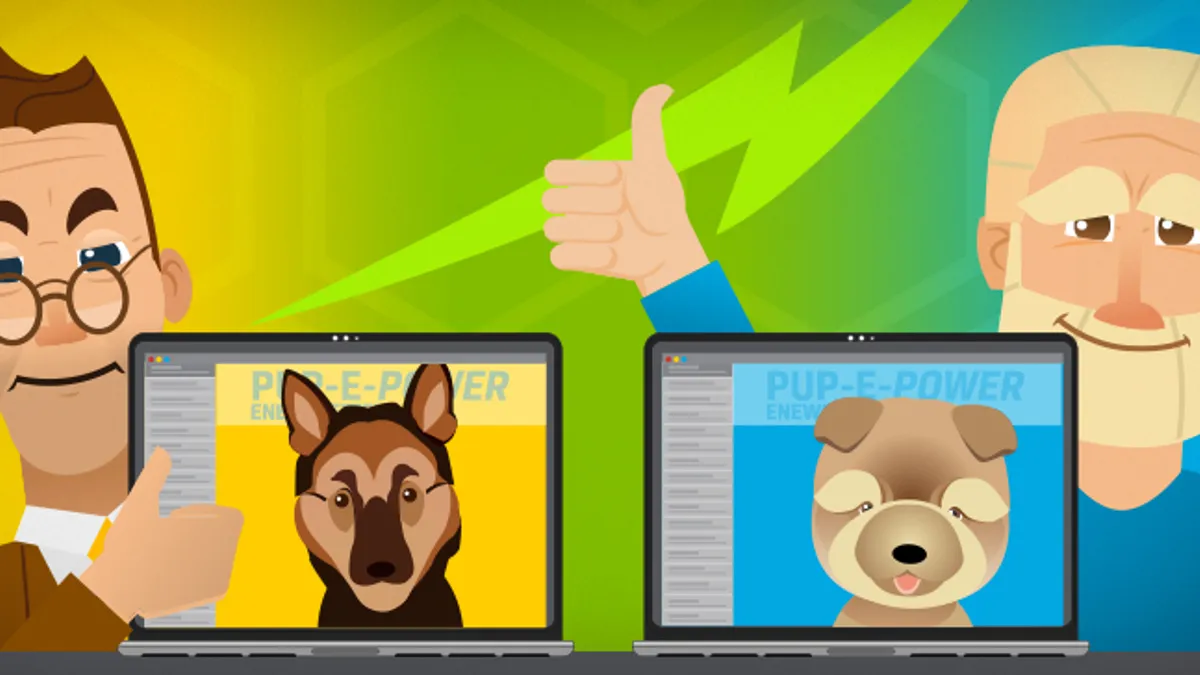Energy utilities are catching on that generic mass emails won’t cut it in a world of hyper-personalization. To give customers what they expect, segmentation is becoming a growing trend for utility marketers – and it’s paying off.
Performance metrics show the utilities that deliver segmented content are experiencing greater engagement and stronger digital customer relationships.
Say goodbye to generic emails
Segmentation is essential to building an extraordinary utility customer experience. While it’s easier to send a mass marketing message to all customers, this approach makes it harder for energy utilities to create long-term customer satisfaction.
Utility customers are accustomed to segmented content from their favorite brands and online publications, and they expect a similar experience from their energy utility.
For example, digital marketers want to read a newsletter about digital marketing, not engineering. Sports enthusiasts want to read a newsletter with sports commentary, not the latest art exhibit. In the same way, utility customers interested in energy efficiency want content specific to this topic.
The reality is, if customers don’t receive segmented communications from their energy utility, they will begin to tune out the messages – or worse, unsubscribe from email lists.
Energy utilities are taking that risk every time they send a mass email.
In fact, according to SmarterHQ, 72% of consumers say they only pay attention to messages relevant to them. When it comes to connecting with younger generations, a lack of segmented content can make or break customer relationships. For example, 70% of millennials are frustrated with brands that only send generic emails.
Who is finding success with segmentation and how?
But how are energy utilities creating segmented communications? By identifying the benefits of various programs or services that appeal to different groups of customers.
Energy utilities who have already embraced the practice of segmentation are finding success in a few key areas: eNewsletters and e-Bill promotions.
Email newsletters: Segmented eNewsletters have a profound impact on customer engagement with the power to increase open rates and click-through rates of future promotional emails.
To get the most out of this powerful communication tool, many utilities are now segmenting their business eNewsletters into multiple industries or creating eNewsletters for residential customers with specific interests, such as smart home technology or renewable resources.
Residential and business customers are stretched thin with family and work responsibilities and receive hundreds of emails each day. As a result, customers simply will not make time for content that doesn’t apply to them.
AEP Ohio, which serves 1.5 million customers in Ohio, is seeing a significant jump in customer engagement through its eNewsletter segmentation strategy.
Historically, the utility sent out a general email newsletter to all business customers, but it wanted to increase engagement with this time-strapped audience. By segmenting the newsletter audience by multiple industries, including healthcare, education and manufacturing, AEP Ohio was able to increase its connection with these customers.
Each segmented eNewsletter provides energy efficiency advice, content about new trends and technologies, and related program information specific to each industry. For example, healthcare customers now receive targeted information about increasing energy efficiency at a hospital or doctor’s office.
“AEP Ohio is incredibly thoughtful with their customer communications and energy efficiency education,” explains Questline’s Maureen Huss. “Their team is diligent about providing useful content that truly benefits the customer. It is clear that AEP Ohio pays attention to what their C&I customers need and does all they can to provide it.”
AEP Ohio’s strategy paid off with outstanding customer engagement, including 84% higher engagement for the healthcare segment, 54% higher engagement for the education segment and 43% higher engagement for the manufacturing segment.
Paperless billing: In e-Bill campaigns, it behooves energy utilities to address the motivations (or reservations) of each segment and the benefits of going paperless.
For example, some utility customers are motivated by the benefit of online bill access, which allows them to view and pay their bill from any location. While other customers are dissuaded by perceived security concerns with online bill pay.
Sending these two audiences the same message wouldn’t resonate. Instead, segmenting campaigns to speak directly to audience concerns is more fruitful.
A Pennsylvania utility is utilizing targeted personas to segment e-Bill communications based on customer lifestyles, values and motivations. Currently, the utility is testing messaging around each persona to see how customers respond. For example, one persona message is focused on how e-Bill is a natural fit for customers who are tech-savvy and environmentally friendly. Another message spotlights the benefit of reducing paper clutter.
“The utility is committed to segmentation and targeting their customers with messaging that resonates,” says Questline’s Colleen Bullett. “This ‘test and learn’ approach is valuable as the utility moves in the direction of using targeted messages for a wide variety of communications.”
Compared to the non-segmented messages, preliminary results show that customers are responding more to the targeted emails. Persona emails saw a higher click-to-open rate (6.83% vs. 5.83%) and click-through rate (2.01% vs. 1.81%). The persona messages also motivated customers to take action with a greater number of e-Bill conversions.
Give customers what they expect
While many energy utility marketers fear they will exclude certain customers by only sending digital communications to specific groups, this mindset will only hold them back.
Utility customers don’t want “everything and the kitchen sink” sent to them. When scanning their inboxes, they only have time to read the emails with relevant, timely and valuable content.
To reap the benefits of segmentation, it simply takes a commitment to experiment with segmented content and reducing the number of mass email sends.
In turn, customers are thanking these energy utilities with increased engagement and program participation.
Sources:






